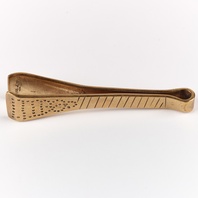
Viking Objects
Reproduction Tweezers
Tweezers were an essential toilet item for the Vikings and most people would have had their own. They could be highly decorated as were many personal possessions. They would have been carried suspended from a brooch or belt.
Read More
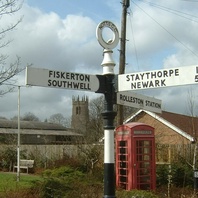
Viking Names
Staythorpe
Staythorpe, in the Thurgarton Wapentake of Nottinghamshire, comes from the Old Norse male personal name Stari and the Old Norse element þorp ‘outlying farm, settlement’.
Read More
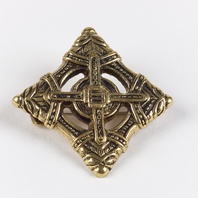
Viking Objects
Reproduction Lozenge Brooch
A copper alloy lozenge brooch in the Borre style based off a find in Lincolnshire. This type of brooch was common throughout the Danelaw in the Viking Age and was used as an accessory by women who wore Scandinavian dress. Scandinavian brooches came in a variety of sizes and shapes which included disc, trefoil, lozenge, equal-armed, and oval shapes. The different brooch types served a variety of functions in Scandinavian female dress with oval brooches typically being used as shoulder clasps for apron-type dresses and the rest being used to secure an outer garment to an inner shift. Anglo-Saxon brooches do not match this diversity of form with large disc brooches being typical of ninth century dress styles with smaller ones becoming more popular in the later ninth and tenth centuries. However, since disc brooches were used by both Anglo-Saxon and Scandinavian women they are distinguished by their morphology. Scandinavian brooches were typically domed with a hollow back while Anglo-Saxon brooches were usually flat. Moreover, Anglo-Saxon brooches were worn singly without accompanying accessories.
Read More
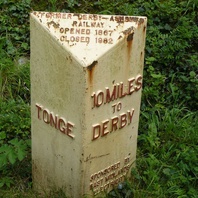
Viking Names
Derby
Derby, in the Morleyston and Litchurch Hundred of Derbyshire, is the only one of the Five Boroughs of the Danelaw to bear a Scandinavian name. It is also one of the few instances of a Scandinavian-named place for which we have an earlier English name. The English name is Norðworðig from the Old English elements norð ‘north’ and worðig ‘enclosure’. This is possibly related to Derby’s position, slightly north-east of Tamworth and that the enclosure’s northernness is relative to the ancient capital of Mercia. In standard reference books the name Derby is explained as Djúrabý, comprising Old Norse djúr ‘deer’ and by ‘farm, settlement’. Furthermore the compound recurs in the British Isles, and probably refers to a particular function – djúrabý ‘specialised production units that had earlier formed parts of multiple estates’. However, the first element of the name probably has a completely different derivation based on its location on the River Derwent, whose name is pre-English in origin. The form of the river-name in the Anglo-Saxon period was Deorwente. Scandinavian settlers hearing this river-name could have associated the first element deor with the familiar compound djúrabý, or indirectly adapted the Romano-British settlement name Derventio. It is certainly possible that the Romano-British name continued in use to refer to the fortified area in the Anglo-Saxon period. Mint-signatures from Derby point to the likelihood not only that Deoraby originally referred specifically to the area of the Roman fort, but also that it is a Scandinavianisation of a pre-existing name of British origin used by the Anglo-Saxons.
Read More
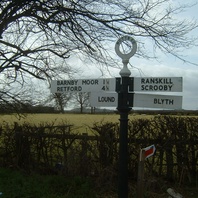
Viking Names
Barnby Moor
Barnby, in the Bassetlaw Wapentake of Nottinghamshire, probably comes from the Old Norse elements barn ‘child’ and by ‘farm, settlement’. Its meaning, ‘children’s farm’, may indicate joint inheritance by the offspring. However, it is also possible that the first element is from the Old Norse male personal name Barni.
Read More
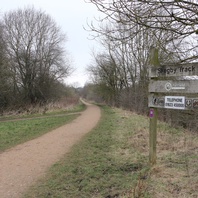
Viking Names
Skegby
Skegby, in the Broxtow Wapentake of Nottinghamshire, comes from the Old Norse male personal name Skeggi ‘the bearded one’ and by ‘a farmstead, a village’.
Read More
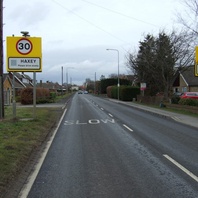
Viking Names
Haxey
Haxey, in the West Riding of Lindsey in Lincolnshire comes from the Old Norse male personal name Haki and Old Norse ey ‘an island’ or Old English eg ‘an island or well-watered land’ which most frequently refers to dry ground surrounded by marsh. The place-name aptly describes the location as Haxey sits on a low-lying hill surrounded marshland.
Read More
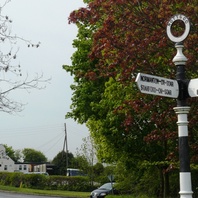
Viking Names
East Leake
East Leake in Rushcliffe Wapentake of Nottinghamshire, is a simplex name from Old Norse lœkr ‘brook’. East and West Leake are on the banks of a small stream which joins the Soar at Kingston.
Read More
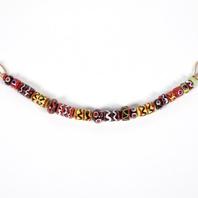
Viking Objects
Reproduction Baltic Glass Beads
This glass-bead set is based on originals from Ribe/Hedeby and the Baltic and were meant to be worn between oval brooches. Glass beads were a coveted item with some being imported from as far away as the Middle East. They were manufactured by specialised artisans who would heat various coloured glass rods over a furnace and melt the glass onto a metal stick to form different shaped beads.
Read More
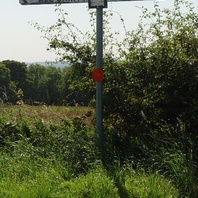
Viking Names
Saxby All Saints
Saxby All Saints, in the Yarborough Wapentake of Lincolnshire, probably takes its name from the Old Norse and Old Danish male personal name Saksi and the Old Norse element by ‘farmstead, village’. This personal name is very common throughout Lincolnshire and Norfolk. Alternatively, the first element of the place-name could be a Scandinavian gen. pl. form of an ethnonym: Old English S(e)axe, Old Norse Saksar ‘Saxons’. Thus the place-name would mean ‘Saxons’ farm/settlement’. The exact implications of such a name are not yet fully understood and are the subject of ongoing work by Dr Jayne Carroll of the Institute for Name-Studies, University of Nottingham. All Saints was affixed at a later date from the dedication of the church.
Read More
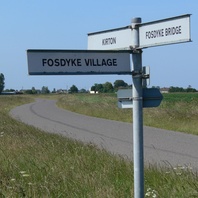
Viking Names
Fosdyke
Fosdyke, in the Kirton Wapentake of Lincolnshire, comes from the Old Norse male personal name Fótr and Old Norse element dík ‘a ditch, a water-channel’. The same personal name occurs in other place-names in Lincolnshire: Foston and Fotherby as well as possibly in Foston, Derbyshire.
